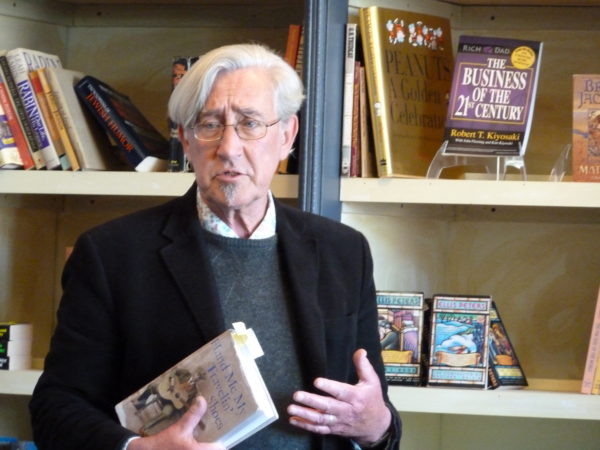
When Bob Dylan was announced as the winner of the Nobel Prize for Literature in 2016, the literary world was shocked, if not a little scandalised. Although the prestigious award has long been the subject of criticism and dispute, the decision sparked heated debate about the relationship between music and literature, and even the very meaning of the word “author”.
Over 40 years before this controversy, Michael Gray published the first-ever study of Dylan’s work, Song and Dance Man: The Art of Bob Dylan, in which he analysed the singer’s work alongside that of major literary figures. This week, Arthur’s Pub hosted Gray for a lecture entitled “Bob Dylan, Literature and the Poetry of the Blues”. Engaging his audience in the cosy, low-lit pub with his seemingly boundless knowledge, Gray discussed the dual influences of literature and the blues on Dylan’s music, arguing that while Dylan borrowed from both, he also made major contributions to the two fields.
The talk opened with mentions of the often humorous literary cameos in Dylan’s lyrics – from Shakespeare lurking in alleyways, to Ezra Pound and TS Eliot fighting in the captain’s tower, to comparing past love affairs to the tempestuous relationship between Paul Verlaine and Arthur Rimbaud. One influence that surprised even myself, a diehard Dylan fan, was the Victorian poet Robert Browning, who was a master of the dramatic monologue or persona poem. This form features a speaker, often imagined, addressing a silent listener who is not the reader, which Dylan incorporated to powerful effect in a number of his songs.
Attention then shifted to another of Dylan’s key influences: the blues. The 1960s blues revival, which saw Greenwich Village musicians travel south to learn from traditional blues artists, could not have had a more profound effect on Dylan. The man himself once said that these musicians were “never figures of the past for me, but always figures of the continuous present”. The influence of the blues on Dylan can be seen in his frequent use of the 12-bar blues chord progression, his borrowing of phrases and his use of the traditional poetic structure of blues lyrics, which is in iambic pentameter.
Gray admitted his initial disappointment as a young man to discover that Dylan was “not a lone genius”. Yet Dylan never pretended to be entirely original. Focusing on one of Dylan’s most popular albums, Blonde on Blonde, Gray illustrated his points with the aid of audio clips. Playing tracks by blues musicians Jimmy Reed and Memphis Minnie, he proved how many of Dylan’s songs on this album owe their melodic structure to these artists.
Although never voicing the term “cultural appropriation”, Gray nonetheless seemed to be making a case against it, describing how the blues revival led to heightened recognition and success for black blues artists and emphasising the lack of a sense of ownership of melodies and lyrics among musicians of this genre. He made the point too that Dylan constantly cites his inspiration and references, particularly in the sleeve notes of his albums.
Although Dylan took from the blues tradition, he also added to it, fusing personal and traditional material to make a clear creative contribution to the genre. This called to mind the sentiments of poet Paul Muldoon in this year’s Edmund Burke lecture, who spoke of the difference between appreciation and appropriation, and quoted the example of Van Morrison as an artist who, like Dylan, took inspiration from black artists.
Gray concluded his talk by addressing the Nobel Prize controversy, defending it as a “brave decision”, and one that he believes has no grounds for objection considering the strong influence Dylan has had on many forms of cultural expression of the past 50 years. His lecture was a deeply revealing and enjoyable exploration of two major influences on the artist who has arguably played the greatest role in challenging the conception of music as distinctly separate from literature. As Dylan himself said in his acceptance speech, “I return once again to Homer, who says, ‘Sing in me, oh Muse, and through me tell the story’”.






